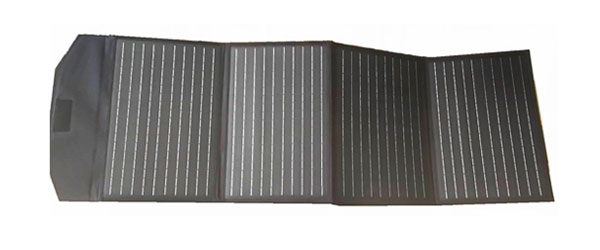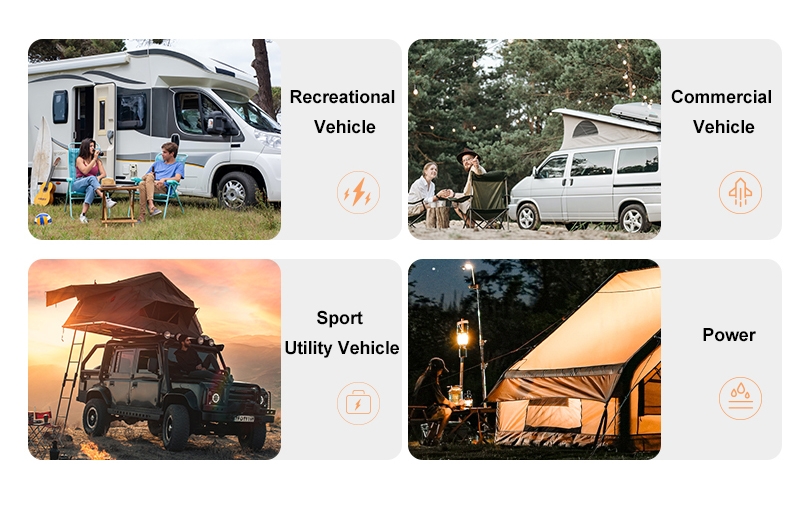With the increasing demand for energy and growing environmental concerns, solar energy is attracting attention as a clean, renewable energy resource. Portable solar panels are an outstanding achievement of modern technology, and with their compact and lightweight design, they provide a convenient way to get power for outdoor activities, camping, hiking, or emergencies.
The working principle behind these portable solar panels is based on solar cell technology, which is used to fulfill the charging needs of various electronic devices by converting sunlight into electricity. As an important application of solar technology, portable solar panels have become an important source of energy for outdoor enthusiasts, campers, and emergencies. Inverter online shop will introduce you to the working principle of portable solar panels and their application in various scenarios.
Structure
Portable solar panels, also known as portable photovoltaic panels, are devices that convert the sun's energy directly into electricity. Its basic working principle is the photovoltaic effect, which means that when sunlight irradiates a semiconductor material, photons will excite the electrons in the material, causing them to jump to a state with a higher energy level, thus generating an electric current.
- Photovoltaic Materials: The core of portable solar panels is photovoltaic materials. Common photovoltaic materials include monocrystalline silicon, polycrystalline silicon, amorphous silicon, and other organic materials. The choice of these materials affects the efficiency and cost of the panel.
- Monocrystalline Silicon: High efficiency and long life, but higher manufacturing costs.
- Polycrystalline Silicon: Lower cost, but slightly lower efficiency.
- Amorphous Silicon: Suitable for flexible panels, but with relatively low efficiency.
- Organic Materials: Lightweight and suitable for flexible panels, but efficiency is usually low.

Photovoltaic Effect
- Absorption of Photons: Photons from sunlight are absorbed by the photovoltaic material and excite electrons within the material.
- Formation of Electron-hole Pairs: The excited electrons leave their atomic orbitals, leaving behind a "hole".
- Electronic Drift: The electrons and holes begin to move through the PV material.
- Current Generation: As the electrons and holes move through the material, an electric current is formed, which generates electrical energy.
How It Works
Portable solar panels usually consist of multiple solar cells that are connected by specific circuits and components to achieve higher voltage and current output.
Arrangement of portable solar panels: Portable solar panels typically utilize multiple solar cells arranged on a plate or flexible substrate. The cells of the portable solar panel are connected by metal wires to form a battery pack. The arrangement can be in series or parallel to increase the output voltage or current as needed.
- Solar Light Irradiation: When the portable solar panel is exposed to sunlight, sunlight strikes the surface of the photovoltaic material on the portable solar panel. The photovoltaic material absorbs the energy from the sunlight and begins to produce electron and hole pairs.
- Current Generation: Each solar cell unit generates an electric current and transfers it to the circuit of the portable solar panel through a connecting wire. In the circuit, the current can be controlled by rectifiers and regulators to ensure a stable output of voltage and current.
- Panel Output: The output of a portable solar panel is usually direct current. This current can be used to directly power devices such as charging mobile devices, electronics, batteries, etc. It can also be used to charge battery storage devices to power them at night or on cloudy days.

Applications
- Outdoor Activities: Portable solar panels can provide power to outdoor enthusiasts for charging devices such as smartphones, tablets, GPS, etc., ensuring that you can stay connected and navigate during outdoor activities.
- Camping and Traveling: During camping and traveling, portable solar panels can charge lighting devices, rice cookers, small refrigerators, etc. to enhance the comfort of the camping experience.
- Emergency Situations: In emergencies, portable solar panels can provide power to disaster areas, charging medical equipment, communication equipment, and lighting equipment to provide necessary help.
- Power Supply in Rural Areas: Portable solar panels can be used in rural areas to provide power to remote areas for lighting, charging, small machinery, and other uses to improve the quality of life.
Portable solar panels work based on the photovoltaic effect, providing electricity by converting sunlight into electricity. Portable solar panels play an important role as solar energy products that provide a clean, renewable source of electricity for outdoor activities, camping, traveling, and emergencies. As technology continues to advance, the efficiency and mobility of portable solar panels will continue to improve, providing sustainable power solutions for a wider range of applications.
